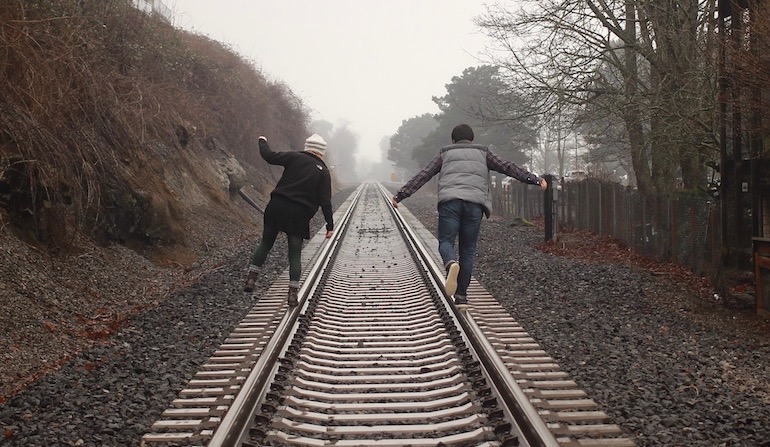 Evolution
Evolution
 Intelligent Design
Intelligent Design
Keeping the Debate Over Undeniable on Track


I wrote Undeniable primarily for people who wonder whether God is really there — either believers who sometimes doubt their belief or doubters who sometimes doubt their doubt. These people need to know that claims on the part of scientists to have made sense of reality apart from God are badly confused. And because Darwin’s theory is the centerpiece of those claims, I made refuting his theory the centerpiece of the book.
People who confidently affirm both Darwin’s theory and God’s existence were less of a priority for me then, in 2016, but my sense of the importance of addressing that group has grown in the years since (which accounts for my contribution to Theistic Evolution).
An Unfolding Discussion
Hans Vodder is a friend in this latter group with whom I’ve been enjoying an unfolding discussion of the argument in Undeniable for well over a year. Hans thinks my argument wrongly assumes that living things are “discrete combinatorial objects” (DCOs), a term that traces back at least to William Dembski’s No Free Lunch (2002), but which I never use in Undeniable. Based on my understanding of what Hans means by this term, I’ve been trying to convince him (most recently here, and before that here) that his objections don’t apply.
Here is Hans’s recent response:
You mentioned the “hope… that we will at least pinpoint the cause of our disagreement.” Sharing that hope, I suggest our disagreement may stem from addressing two questions simultaneously. The first question is, “How do we calculate the probability that organisms evolved by chance?” The second is an open question in biology: “How might natural processes navigate overwhelmingly large search spaces?” While obviously related, these questions are distinct.
I’ve focused on the first, questioning Undeniable’s method (and for me, what I’ve claimed are assumptions of the method aren’t necessarily assumptions I attribute to you, personally). My criticisms may seem pedantic compared to the larger question about search spaces, but the probabilistic issues aren’t trivial. To see why, let’s start by considering the “crude math” described in our last exchange:
“A main point of Undeniable is that the making of any whole thing that does something clever requires a great many parts to be arranged in a complementary way. Taken individually, each of these parts is unlikely to be arranged correctly by chance… The hundreds or thousands of small fractions representing the individual probabilities inevitably multiply to a probability so small as to constitute an outright impossibility” (Axe, 09/21/18, quoted in Axe, 12/12/18; emphasis in the original).
Now, correct me if I’m wrong, but it sounds like there is an assumption here, namely, that the “whole” can be treated as the sum of its parts, with each part being assigned an independent probability value. As far as I can tell, this is a textbook case of a DCO-based probability calculation (but I’m no expert in probability theory, so if I’m wrong, please help me out).
The basic problem is that this method of calculation assumes something not in evidence — that living things are basically DCOs. An additional problem, as I tried to show in my previous post, is that modeling living things as DCOs implies consequences neither of us finds acceptable, such as synchronic appearance. The upshot is that even if excruciatingly small fractions entailing fantastic improbability are employed by the method, the method itself uses an inappropriate model (an organisms-as-DCOs model), making it the wrong probabilistic tool for the job. As a result, nothing conclusive follows from its use.
I think we’re addressing the same question, Hans. You’re absolutely right to focus on my treatment of the probability of organisms evolving by chance.
Veering Off Course
On the other hand, if you’re focusing on someone else’s treatment of that probability, then we’re going to get off track. When you say: “what I [Hans] have claimed are assumptions of the method aren’t necessarily assumptions I attribute to you [Doug], personally,” we do indeed seem to have veered off course.
Since the point in question is whether the argument I put forward in Undeniable is valid, and you and I are the people trying to resolve our disagreement on that, Van Till’s critique of Dembski needs to be set aside. If background reading helps you address what I’m saying, that’s great! But do address what I’m saying.
A Concrete Example
For the past several posts, I’ve used a concrete example — natural causes sculpting a rugged outcrop of marble into a magnificent human statue — to illustrate the simplicity and generality of the argument in Undeniable. I’ve been claiming not only that we all intuitively sense the impossibility of this happening, but also that we can use simple probabilistic reasoning to validate that intuition. It’s this simple Hans:
- The forming of this statue would require surface reshaping that is both extensive and coherent.
- For natural causes to exquisitely sculpt even a small portion of a human figure — an eyelid or a thumbnail — is improbable.
- It follows that for natural causes to sculpt the many hundreds of comparably improbable small portions of a human figure — not only in the same chunk of marble but also in their proper proportions and placements — is fantastically improbable.
Do you agree, Hans? If not, can you explain your disagreement by identifying the faulty assumption or the faulty inference rather than by categorizing the argument?
Photo credit: Jonathan Pendleton via Unsplash.
